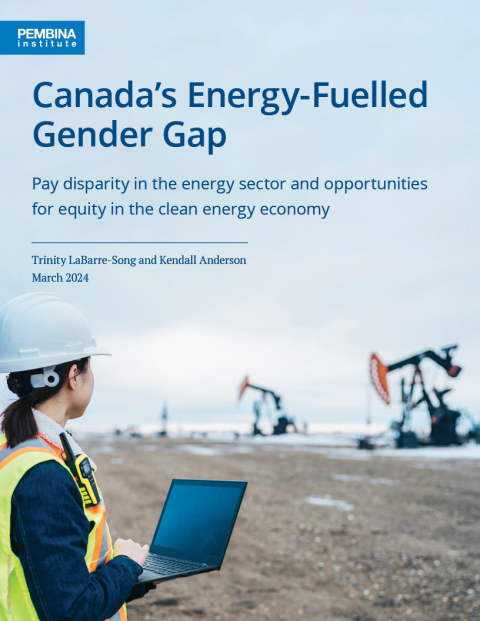The energy industry is one of the least equitable industries in Canada for women and gender diverse people and one of the largest drivers of the national wage gap. From oil and gas to pipelines and electricity, women are both paid less and underrepresented across the workforce, including within leadership positions.
Canada faces an invaluable opportunity to address these failures as it races to meet the opportunity of a new clean energy economy and its requisite labour demand. Government and industry alike play a central role in channeling the investments necessary to meet these needs and create a sustainable, equitable workforce that offers good, well-paying jobs.
Our report, Canada’s Energy-Fuelled Gender Gap, examines pay equity within the sector, shines a light on persistent issues surrounding the representation of women and gender diverse populations, and explores the potential for a more equitable workforce in the evolving clean energy transition.
Key findings
- According to the OECD, Canada has the second worst gender pay gap compared to peer G7 countries.
- Sitting at a ratio of 0.82, Alberta has the lowest gender wage ratio in all of Canada. In other words, for every dollar a man in Alberta makes, a woman in Alberta makes 82 cents. The national wage ratio average sits at 0.87.
- Women represent 50.9% of the Canadian population and 47.5% of its workforce. Yet among energy workers, they make up a quarter of the energy workforce, with some variation depending on the industry. For example, in mining they represent 16% and in electric power generation they represent 27.%.
- In Alberta’s oil and gas sector the average income for men is $133,000, while for women it's $105,100, and for Indigenous women, $92,500. A similar gap exists in the utilities sector, where the average income for men is $138,400, for women, $108,900, and for Indigenous women, $86,400.
Our research suggests that Canada will have two million clean economy jobs by 2050. Despite this positive and compelling outlook, many provinces have shortages of skilled labour. Government and industry must collaboratively interrogate this shortage and commit to workforce development methodologies which prioritize the inclusion of historically underrepresented groups, including women, racialized people, and newcomers into the rapidly advancing clean economy.
Report recommendations
- Provide training and education opportunities for all genders to enter the energy sector
- Commit to the creation of flexible and safe workplaces
- Support intersectional gender-diverse leadership
- Collect disaggregated data (by ethnicity, leadership level etc.) and support data transparency and ethical data use








